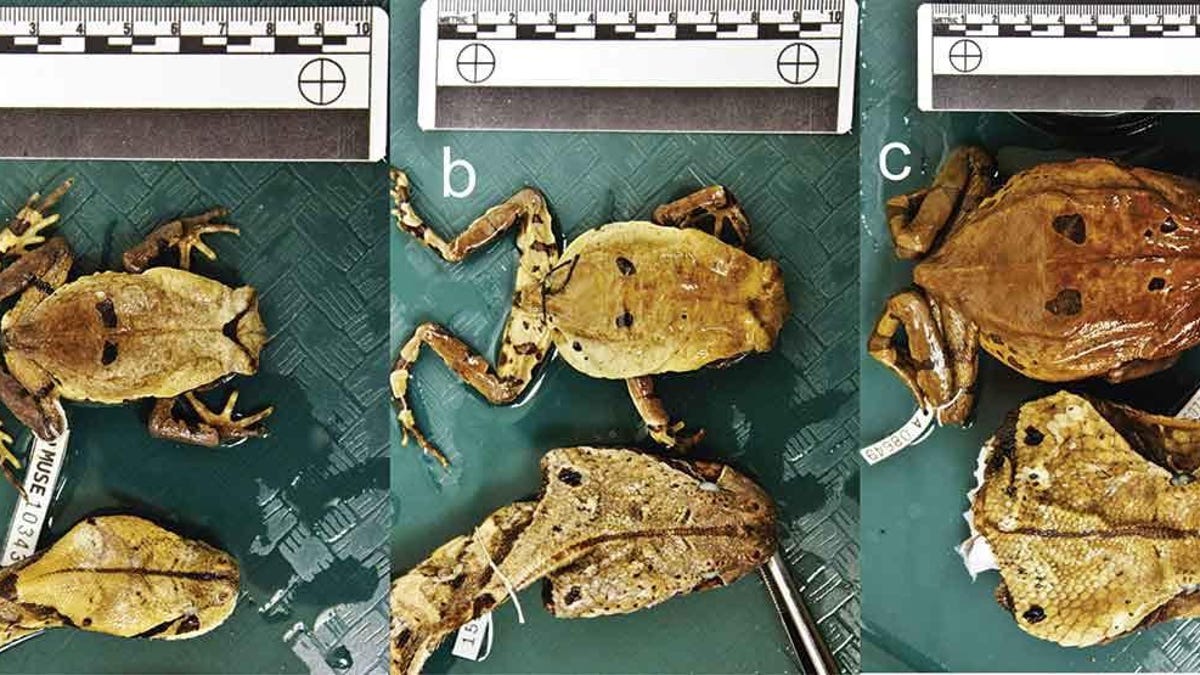These clever toads pretend to be deadly snakes to avoid being attacked
Congolese giant toads appear to mimic Africa's largest vipers to fool predators, researchers discover.

Variations in the dorsal pattern of preserved specimens of Congolese toads and Gaboon viper snakes.
When you share the same habitat as a venomous snake, pretending to be one of them could be the trick to not being eaten by predators. At least that's what Congolese giant toads seem to do.
The toads (Sclerophrys channingi) appear to mimic the Gaboon viper in both appearance and behavior, according to a study published this week in the Journal of Natural History. This is the first study to document and identify an amphibian mimicking a venomous snake.
Batesian mimicry is a phenomenon in nature where a non-toxic animal (like the toad) imitates a toxic animal (such as the viper) as a way to deter predators through deception.
The Gaboon viper's coloring is a mix of brown, pink and purple in a diamond pattern with stripes along its back. Its broad head mimics a fallen leaf, which gives the snake its own form of camouflage on the forest floor where it generally lives. Researchers from Texas and Africa found that Congolese giant toads can change their skin color and pattern to look a lot like that viper, fooling predators into leaving them alone.
Here's a lateral comparison of preserved specimens of the toad's head (top) and the snake's head (bottom).
The study included 10 years of fieldwork and researchers' direct observation, said Eli Greenbaum, from the University of Texas at El Paso, in a statement. The researchers studied both live and captive specimens of the toads, as well as those preserved in museums, and found that the color pattern and shape of the toad's body is similar to that of the viper's head.
The toads don't just look like the vipers they want to scare off. They also sound like them.
During the research, Congolese herpetologist Chifundera Kusamba observed the toads making hissing noises that sounded like a balloon deflating. That's similar to the loud warning hiss the snake makes when it feels threatened.
"Many of these predators use vision to find their prey, and because the viper is deadly venomous, they probably recognize the distinctive, contrasting markings from a considerable distance and avoid the toad because of them, receiving a threatening hiss if the appearance doesn't put them off," Kusamba said.
Now if only human hikers could figure out how to scare off predators by mimicking a deadly animal.

